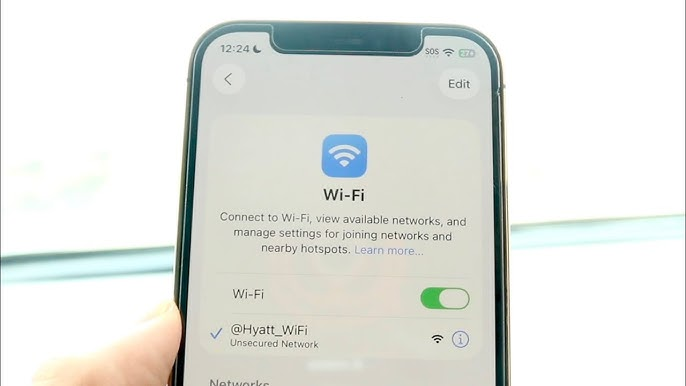a16z、Binance、前IDG资深投资人解析GameFi 3.0 | Ambrus Studio Gamefi Summit

Ambrus Studio举办的首届GameFi 3.0峰会于10月1日在Twitter Space、Binance直播等多个平台同步举行,实时在线观看人数峰值达3,000人,首日累计观看次数6,500+。峰会由前IDG投资合伙人、被媒体称为“战略女王”的余进女士主持,参会嘉宾包括有着“电竞教父”业界称号的Ambrus Studio创始人及CEO Johnson Yeh、被福布斯评为全球最具价值的电竞俱乐部TSM的创始人Andy Dinh、Binance前Chief Growth Officer Ted Lin、及a16z GameFi投资合伙人 Robin Guo。
在Axie Infinity、StepN爆火之后,我们尚未观察到市场上出现下一个有足够用户量和讨论度的GameFi项目,这其中固然有宏观环境转冷、整个加密市场步入熊市的原因,也暴露出GameFi项目本身用户价值存疑、生命周期过短的问题。在此市场环境下,几位跨界Web2与Web3的创始人、投资人及行业领导者,围绕“GameFi项目如何逃脱死亡螺旋”这一主题,从游戏设计、社区构建、电竞元素、NFT商业化等多个方面分享了个人见解,也与在场观众进行了深入讨论和思想碰撞。
根据Statista数据,加密货币市场在2021年底的整体市值高达2.3万亿美元,而截至八月底,整体市值已缩水至1万亿美元,降幅达56.5%。然而,在市场迅速降温的情况下,PE/VC对Web3的投资却不降反增。2021年,PE/VC对Web3的投资总额为302亿美元,而麦肯锡预估,该数字将在2022年全年达到360亿美元。
熊市对于项目方与投资人而言,既是挑战,也是不可多得的Build机会。在资金弹药充足的情况下,可以预见市场正在孵化新一代的Web3项目,那么就GameFi项目而言,迭代至3.0阶段的GameFi项目将会具备哪些主要特征?
GameFi3.0:产品回归用户价值
站在行业投资人的角度,Robin与Ted提出,下一代成功的GameFi项目必将以“好玩”(Fun to play)为必要基础,而非以游戏为外壳的挖矿系统,同时有不输于Web2产品的可用性、易用性。打造这样的产品需要回归用户视角打造产品,L1、L2、钱包等基础设施应当在与用户的直接交互层“隐身”,且产品需要充分考虑到用户在Web2阶段养成的交互习惯。
站在GameFi项目创始人的角度,Johnson提出,除重视玩法品质打磨、降低用户进入门槛外,Ambrus Studio核心游戏,E4C:Final Salvation(以下简称“E4C”)就是要打造一款真正好玩的游戏,其电竞性质旨在建立玩家与游戏的共同情感连接,有助于构筑大规模玩家社区。据Johnson介绍,E4C是一款面向移动端的MOBA竞技游戏,通过玩法创新,该游戏将充分平衡竞技强度、策略深度与操作难度,为玩家提供移动端原生的MOBA体验;通过免费游玩、无需钱包登陆、操作及界面适配移动端特性等,极大降低玩家的进入门槛。
当然,GameFi项目当前的挑战也十分明确。Robin指出,GameFi项目的首要挑战在于游戏人才的短缺。游戏的开发本身需要一支涵盖美术、技术、策划等人才的跨专业团队,耗费数年时间持续进行打磨,而当前人才仍主要集中在传统游戏工作室,且对于GameFi本身的观感两极分化,人才从Web2到Web3的迁移还没有出现明确的趋势。其次,包括产品易用性、定价等在内的GTM(Go-to-market)策略是GameFi项目需要解决的另一挑战。除了这两大突出挑战外,GameFi项目仍然要面对传统游戏项目中广泛存在的渠道、市场监管、地域文化多样性等问题。
GameFi3.0:电竞元素帮助捕获用户价值
根据Newzoo数据,2021年全球游戏玩家总量达到30.9亿人,其中GameFi玩家仅占其中的0.07%。下一代GameFi项目除打磨玩法与品质之外,也需回答如何吸引和转化更主流的游戏玩家。
在这一点上,Johnson提出,社区与电竞将是两大吸引传统玩家的抓手,且相辅相成。
获客方面,传统游戏的买量方法成本过于昂贵,并不适配于GameFi项目。对于GameFi项目而言,自下而上构建社区才是游戏获客的首选,而Web3用户是无可置疑的滚雪球的起点。Ambrus Studio当前社区内汇集超过2.6万用户,通过大量与游戏相关的共创活动,建立用户对社区与项目的情感链接,未来Ambrus Studio将逐步迭代成以游戏/电竞为主题的用户社区,从而将雪球滚动至传统玩家领域。
2021年电竞用户达到5亿人,且保持年均2位数的增速,其流行性和影响力已在传统游戏领域得到了证明,电竞对游戏的正向影响在Web2和Web3是互通的,包括更低的获客成本、更多元化的变现途径。赛事观看与游戏游玩本身是不同的玩家体验,且赛事的大众性使得玩家能够与更大基数的用户共享情感链接,而这种情感链接将是GameFi项目用户资产变现的重要基础。
GameFi3.0:NFT技术驱动下的商业化
产品层面,Web3或许对Web2暂未形成“颠覆”之势,但在商业化层面,Web3无疑为互联网产品打开了新的思路,尤其是NFT技术带来的创新或将使GameFi项目的商业化能力突破传统游戏的天花板。
作为NFT领域的活跃投资人,Ted认为,NFT在游戏项目中的价值可体现为三点。首先,虚拟资产是玩家体验的重要组成部分,而NFT使资产的交易更加便捷。其次,NFT的互操作性能够一键实现IP互通,用户只需要连接钱包即可将其拥有的NFT展示或使用在多个平台上。最后,NFT稀缺性明确可见,增加了其所有权的价值。
Andy认为,站在玩家的角度,NFT的价值在于以一种可见的形式镌刻了玩家的独有记忆,从而能够在社交关系内进行流转。
Robin总结提出,在商业化方面,传统的游戏通常为玩法决定商业化,如买断、开箱等,而基于区块链技术,游戏项目方能够实现的新商业模式为交易市场+手续费,从而倒逼游戏玩法设计上增加更多的交易、交换场景。他以《精灵宝可梦》为例,如红蓝、金银系列的游戏,通常会在不同版本的游戏中加入一只该版本独有的宝可梦,想要收集该宝可梦的玩家,必须与拥有该版本游戏的玩家进行交互,从而鼓励了玩家间的交流与交易。
而NFT技术在鼓励交易的基础上,也提升了资产对玩家本身的价值。他曾在拳头游戏带领研发团队探索新一代皮肤系统,用于记录玩家的游戏成就,而转向Web3后,他发现NFT能够实现他最初的设想。技术的不断尝试,使玩家除了铸造本身,还可以持续向自己的NFT中增加信息记录,或直接进行“变异”,而这将进一步释放GameFi的商业化潜力。
这一点与Johnson的观点不谋而合,他提出,区块链技术本身带来的独一所有权、互操作性的优势很难直接打动玩家、促使玩家付费,GameFi项目的商业化应当利用这些特性,提升传统游戏商业化手段。
Johnson认为,NFT是对“情感链接”进行变现的有效手段,因此E4C游戏NFT需要能够持续记录并可视化用户的情感连接,他将此描述为“皮肤升级系统”。
以英雄联盟为例,每年电竞赛事的冠军皮肤销售即是玩家情感链接的一次性变现。而Ambrus Studio旗下的E4C游戏将基于重大赛事/关键成就等,销售可升级变化的NFT,为玩家提供记录特殊事件与情感链接的载体。
对于项目方而言,将一次性的消费转化为持续性的“升级”消费;对于玩家而言,共享情感链接也将成为其NFT交易价值的来源之一。
同时,Ambrus Studio创世NFT系列还为玩家提供了丰富的游戏内权益,包括游戏皮肤收入分成、游戏限量宝箱及终身消费折扣。其Ultimate版本已于8月初完成拍卖,在起拍价格高达6.5ETH的情况下全部拍出。当前销售的Gold版本于9月30日开售,白名单阶段共售出258枚,当前地板价0.5ETH。



